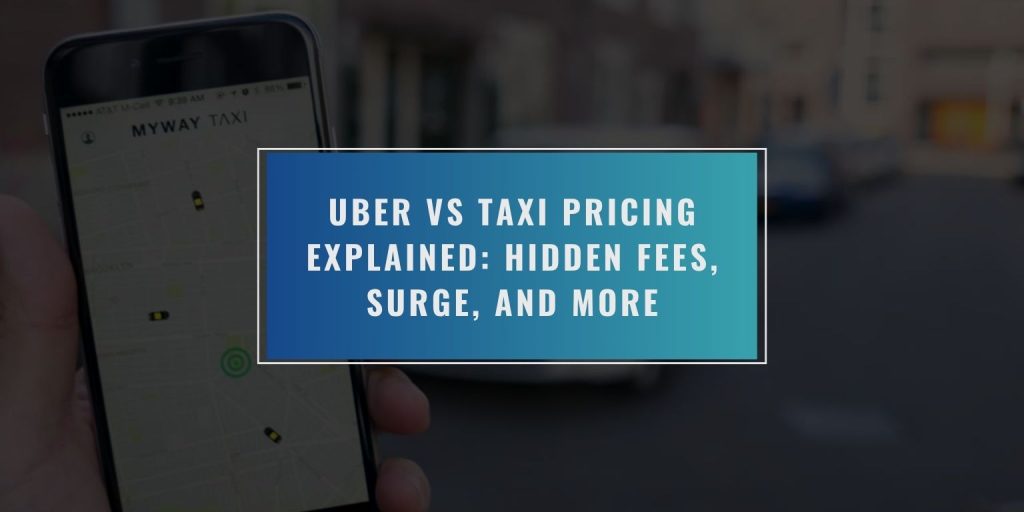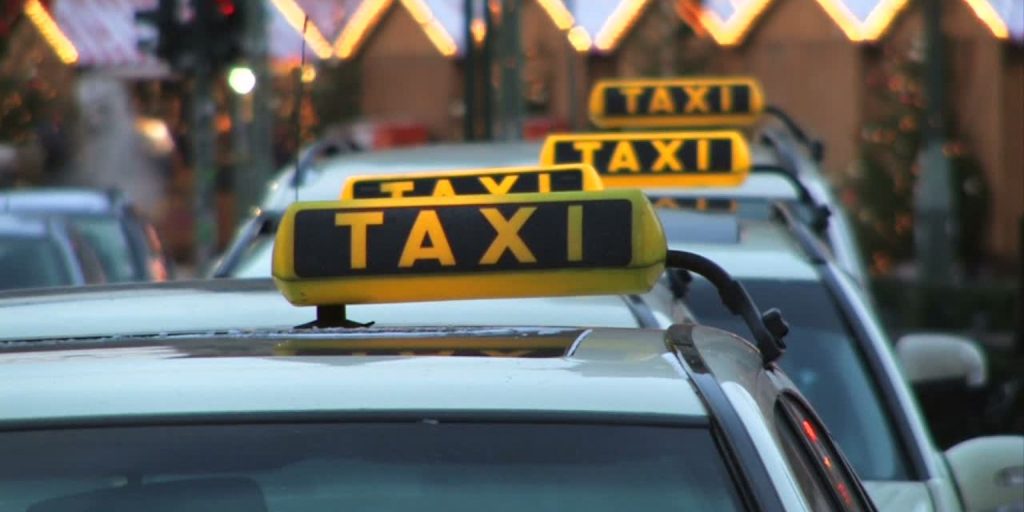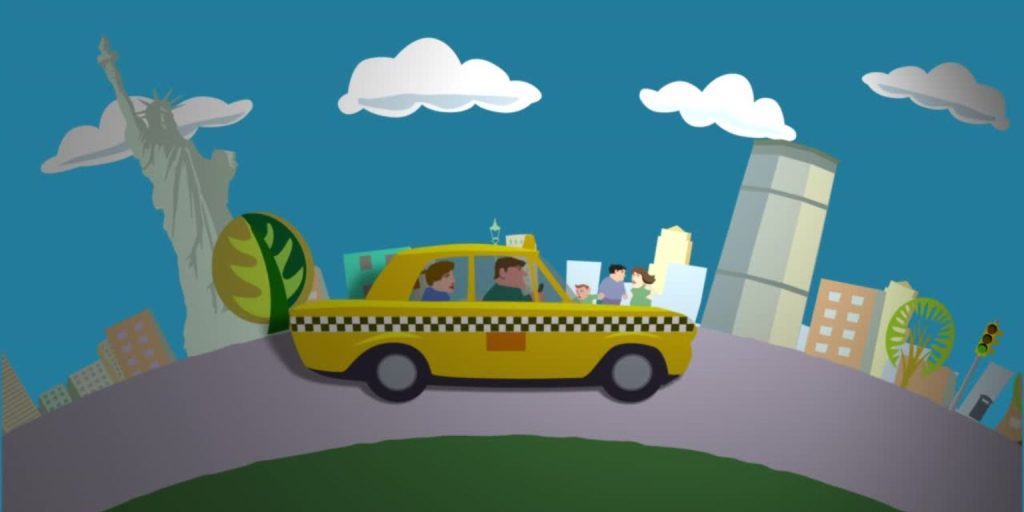When you need a ride fast, the first question often isn’t “How soon can I get there?”—it’s “How much is this going to cost me?” For millions of riders in cities around the world, choosing between Uber and a taxi can come down to just a few dollars. That difference adds up over time, especially for regular commuters or budget-conscious travelers.
This article is for people who ride often, visitors trying to stretch their travel budget, and students deciding between app convenience and old-school curb hailing. If you’re booking a ride in New York, Mumbai, or London, knowing which is cheaper helps you make smarter choices. Let’s break down the numbers.
How Uber and Taxis Set Prices?
Uber and taxis use two different systems to calculate fares, and understanding these models is key to saving money.
Uber uses dynamic pricing. The base fare is combined with time and distance. For example, a ride might cost more per mile during heavy traffic, or during high demand hours, like rainy mornings or weekend nights. One of Uber’s most known features is surge pricing—a multiplier applied when many people are requesting rides in one area. This can double or even triple your expected fare. However, Uber shows the full price before you confirm, so you know exactly what you’ll pay.
On the other hand, taxis typically use a metered system. A fixed base fare is charged when the ride starts. From there, the fare increases based on distance traveled and time spent in traffic. If the cab is stuck in traffic or waiting at a red light, the meter continues to run, increasing the fare even if the car isn’t moving. While rates vary from city to city, most places publish these rates and keep them fairly consistent.
Uber uses app-based fare calculators that predict price before the ride begins. This can be helpful when budgeting for a trip. Taxis don’t offer upfront pricing. You find out what you owe once the ride ends. This makes it harder to estimate costs—especially if traffic or route changes happen mid-ride.
Both systems have pros and cons. Uber offers price clarity but unpredictable surge. Taxis offer stable per-mile pricing but more variability during long or slow rides.
Short Ride Pricing: Under 5 Miles
In major cities, short rides are common. These are often the cheapest trips—but who gives the better deal?
In New York City, a short UberX trip under 5 miles usually falls between $12 and $16 without surge pricing. A yellow cab can cost about $15, depending on traffic lights, stop signs, or congestion. If there’s no surge, Uber is often the cheaper option for short rides in the city.
In Los Angeles, Uber tends to be consistently lower for short distances. For example, a 3-mile ride in an UberX may cost $9–$11, while a metered taxi starts with a higher base fare and charges more per mile. Unless there’s heavy traffic or high demand, Uber wins most of these short-trip comparisons in LA.
Mumbai presents a different picture. Traditional taxis, especially kaali-peeli cabs, follow flat rates regulated by the government. A short city ride could cost ₹80–₹120. UberGo may charge slightly more but offers air-conditioning, app-tracking, and digital payment. For basic travel, taxis still have the price edge in many Indian cities.
Long Distance Rides: Over 20 Miles
For longer routes, the pricing balance shifts.
Taxis in many cities offer fixed-rate airport transfers or long-distance deals. In cities like London, traditional black cabs may have flat rates for longer trips to avoid fare shocks. These can make taxis more predictable—and sometimes cheaper—for longer rides.
Uber’s pricing on long rides increases with distance and time. If traffic slows things down or the app applies surge pricing, the cost can grow fast. What starts as a $30 trip can climb to $50 or more if you’re unlucky with timing. Long rides through traffic-heavy areas make Uber pricing less stable.
However, Uber often discounts long rides in suburbs or non-core areas, especially in regions where taxis are harder to find. In some cases, it may even become the cheaper choice—if demand is low.
Surge Pricing and Hidden Costs
Surge pricing and surprise fees can make a big difference in your total fare. Here’s what to watch for:
Uber charges:
- Surge pricing multiplier during high demand
- Booking fees per ride
- Cancellation fees if not canceled quickly
- Tolls added post-ride
- Cleaning fees for spills or damage
Taxi charges:
- Nighttime surcharges in many cities
- Extra charges for airport pickups
- Waiting fees in traffic or at signals
- Baggage fees in some regions
- Payment card processing fees in older cabs
Uber shows these up front. Taxis reveal them at the end. That alone may sway cost-conscious riders to check both before they ride.
Which Is Cheaper by City?
Ride pricing depends heavily on location. Here’s how it often plays out:
- In New York, Uber is often cheaper for short rides within Manhattan or Brooklyn. But for longer trips or airport runs, yellow cabs may win due to flat rates and no surge surprises.
- In London, black cabs are costly for long rides but can be cheaper for quick downtown trips. Uber tends to be cheaper in the evenings—especially when there’s less street traffic.
- In Los Angeles, Uber wins most pricing battles, unless you hit traffic during peak hours when surge pricing applies.
- In Mumbai, local taxis follow government-fixed prices. Uber adds a slight premium for better service, but standard taxis remain cheaper overall for most common routes.
- In Paris, Uber is often the go-to for convenience. However, during rush hour or bad weather, taxis may end up costing less if Uber’s prices spike.
Final Answer: So, Is Uber or a Taxi Cheaper Overall?
There’s no one answer. It depends on where you ride, when you ride, and how far you go. Uber tends to be cheaper for short, app-based trips—especially when surge pricing is not active. Taxis often make more sense for long rides or in cities with regulated flat rates. Smart riders should check both options before choosing.
Need help saving more on rides? Share this article and drop a comment with your city and experience. Let’s help others pick the cheaper ride.




